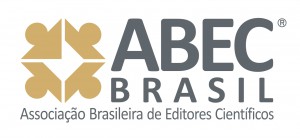The use of peripherally inserted central venous catheter in the Neonatal Intensive Care Unit
DOI:
https://doi.org/10.5216/ree.v22.56923Keywords:
Infusions, Intravenous, Patient Safety, Catheterization, Central Venous, Intensive Care Units, Neonatal, Neonatal NursingAbstract
To analyze the use of peripherally inserted central venous catheter in newborns hospitalized in the Neonatal Intensive Care Unit. Retrospective, descriptive and quantitative research, carried out in 80 medical records of a federal maternity school in Rio de Janeiro, in the period April to July 2018. The use of the device was higher in preterm newborns (83%), the predominant weight was below 1,500 grams (60.9%), the most frequent indication for catheter insertion was low weight, associated or not with prolonged intravenous therapy (35.2%) and the length of stay was over five days (81.8%). The occurrence of adverse events was present in 31.8% of cases. It should be emphasized the importance of correct indication, handling, care in the use of the device, beyond identification of adverse events to establish prevention measures and training of the team in order to reduce risks and promote the safety of newborns.
Downloads
References
Moreira APA, Escudeiro CL, Christovam BP, Silvino ZR, Carvalho MF, Silva RCL. Use of technologies in intravenous therapy: contributions to a safer practice. Rev Bras Enferm [Internet]. 2017 [access at: Jan. 30, 2019];70(3):595-601. Available at: http://www.scielo.br/scielo.php?script=sci_arttext&pid=S0034-71672017000300595. http://dx.doi.org/10.1590/0034-7167-2016-0216.
Uygun I. Peripherally inserted central catheter in neonates: a safe and easy insertion technique. J Pediatr Surg [Internet]. 2016 [access at: Jan. 30, 2019];51(1):188-91. Available at: https://www.sciencedirect.com/science/article/pii/S0022346815004583?via%3Dihub. https://doi.org/10.1016/j.jpedsurg.2015.08.008.
Conselho Federal de Enfermagem. Parecer de Relator Cofen nº 243/2017 aprovado na 494ª ROP. Minuta de resolução que atualiza a normatização do procedimento de inserção, fixação, manutenção e retirada do cateter periférico central por enfermeiro – PICC. Brasília, DF: COFEN; 2017.
Prado NCC, Silva RAR, Costa RHS, Delgado MF. Remoção não eletiva do cateter central de inserção periférica em unidade neonatal. Rev Eletr Enf [Internet]. 2018 [access at: Jan. 30, 2019];20:v20a13. Available at https://www.revistas.ufg.br/fen/article/view/45559/26050. https://doi.org/10.5216/ree.v20.45559.
Lanzillotti LS, Andrade CLT, Mendes W, Seta MH. Eventos adversos e incidentes sem dano em recém-nascidos notificados no Brasil, nos anos 2007 a 2013. Cad Saúde Pública [Internet]. 2016 [access at: Sept. 30, 2019];32(9):e00100415. Available at: http://www.scielo.br/scielo.php?script=sci_arttext&pid=S0102-311X2016000905010&lng=en. http://dx.doi.org/10.1590/0102-311X00100415.
Pedreira MLG. Obstrução de cateteres centrais de inserção periférica em neonatos: a prevenção é a melhor intervenção. Rev Paulista de Pediatria [Internet]. 2015 [access at: Jan. 31, 2019];33(3):255-7. Available at: https://www.sciencedirect.com/science/article/pii/S0103058215000714?via%3Dihub. https://doi.org/10.1016/j.rpped.2015.05.003.
Jantsch LB, Neves ET, Arrué AM, Kegles JJ, Oliveira CR. Utilização do cateter central de inserção periférica em neonatologia. Rev Baiana Enferm [Internet]. 2014 [access at: Ouct. 01, 2019];28(3):244-51 Available at: https://portalseer.ufba.br/index.php/enfermagem/article/view/10109/8985. http://dx.doi.org/10.18471/rbe.v28i3.10109.
Araújo FL, Manzo BF, Costa ACL, Corrêa AR, Marcatto JO, Simão DAS. Adherence to central venous cateter insertion bundle in neonatal and pediatric units. Rev Esc Enferm USP [Internet]. 2017 [access at: Nov. 30, 2018];51:e03269. Available at: https://www.scielo.br/pdf/reeusp/v51/en_0080-6234-reeusp-S1980-220X2017009603269.pdf. http://dx.doi.org/10.1590/s1980-220x2017009603269.
Mingorance P, Johann DA, Lazzari LSM, Pedrolo E, Oliveira GLR, Danski MTR. Complications of peripherally inserted central catheter (PICC) in neonates. Cienc Cuid Saúde [Internet]. 2014 [access at: Oct. 01, 2019];13(3):433-8. Available at: https://pdfs.semanticscholar.org/7c3f/9f7f14fece6a6355edb61e851a620f85af20.pdf?_ga=2.109093509.1687146117.1586369829-1868046148.1586369829. http://dx.doi.org/10.4025/cienccuidsaude.v13i3.18476.
Cabral PFA, Rocha PK, Barbosa SFF, Dal Sasso GT, Moretti-Pires RO. Análise do uso de cateter central de inserção periférica em Unidade de Cuidado Intensivo Neonatal. Rev Eletr. Enferm [Internet]. 2013 [access at: Jan. 11, 2019];15(1):96-102. Available at: https://www.fen.ufg.br/revista/v15/n1/pdf/v15n1a11.pdf. http://dx.doi.org/10.5216/ree.v15i1.15613.
Figueiredo ML, D’innocenzo M. Adverse events related to pratical assistence: an integrative review Enferm Global [Internet]. 2017 [access at: Jan. 30, 2019];16(47):636-50. Available at: http://scielo.isciii.es/scielo.php?script=sci_arttext&pid=S1695-61412017000300605&lng=es. http://dx.doi.org/10.6018/eglobal.16.3.256091.
Oliveira CG, Rodas ACD. Postmarketing surveillance in Brazil: vascular catheters – an overview of notifications of adverse events and technical complaints. Ciênc Saúde Coletiva [Internet]. 2017 [access at: Oct. 02, 2019];22(10):3247-57. Available at: http://www.scielo.br/scielo.php?script=sci_arttext&pid=S1413-81232017021003247&lng=en. http://dx.doi.org/10.1590/1413-812320172210.17612017.
Gorski L, Hadaway L, Hagle ME, McGoldrick M, Orr M, Doellman D. Infusion therapy standards of practice. Journal of Infusion Nursing [Internet]. 2016 [access at: Jan. 31, 2019];39(1S):S95-S98. Available at: http://source.yiboshi.com/20170417/1492425631944540325.pdf.
Baggio MA, Cheffer MH, Luz MAP, Sanches MM, Berres R. Use of the central catheter for peripheral insertion in newborns: analysis of indication for removal. Rev Rene [Internet]. 2019 [access at: Oct. 01, 2019];20:e41279. Available at: http://www.periodicos.ufc.br/rene/article/view/41279/99346. http://dx.doi.org/10.15253/2175-6783.20192041279.
Salgueiro-Oliveira AS, Basto ML, Braga LM, Arreguy-Sena C, Melo MN, Parreira PMSD. Nursing practices in peripheral venous catheter: phlebitis and patient safety. Texto Contexto Enferm [Internet]. 2019 [access at: Sept. 30, 2019];28:e20180109. Available at: http://www.scielo.br/scielo.php?script=sci_arttext&pid=S0104-07072019000100346&lng=en. https://doi.org/10.1590/1980-265x-tce-2018-0109.
Godelieve AG. Flushing and locking of venous catheters: available evidence and evidence déficit. Nurs Res Pract [Internet]. 2015 [access at: Sept. 30, 2019];2015: 985686. Available at: https://www.ncbi.nlm.nih.gov/pmc/articles/PMC4446496/. https://doi.org/10.1155/2015/985686.
Oliveira CR, Neve ET, Rodrigues EC, Zamberlan KC, Silveira A. Peripherally inserted central catheter in pediatrics and neonatology: possibilities of systematization in a teaching hospital. Esc Anna Nery [Internet]. 2014 [access at: Oct. 01, 2019];18(3): 379-85. Available at: http://www.scielo.br/scielo.php?script=sci_arttext&pid=S1414-81452014000300379&lng=en. http://dx.doi.org/10.5935/1414-8145.20140054.
Silva MPC, Bragato AGC, Ferreira DO, Zago LB, Toffano SEM, Nicolussi AC, et al. Bundle for handling peripherally inserted central catheter in newborns. Acta Paul Enferm [Internet]. 2019 [access at: Oct. 03, 2019];32(3):261-66. Available at: http://www.scielo.br/scielo.php?script=sci_arttext&pid=S0103-21002019000300261&lng=en. http://dx.doi.org/10.1590/1982-0194201900036.
Mendes MTM, Jacinto AKL, Kusahara DM, Peterlini MAS, Pedreira MLG, Avelar AFM. Hemolysis markers of blood administered in non-valved peripherally inserted central catheter. Acta Paul Enferm [Internet]. 2019 [access at: Oct. 01, 2019];32(2):139-46. Available at: http://www.scielo.br/scielo.php?script=sci_arttext&pid=S0103-21002019000200139&lng=en. http://dx.doi.org/10.1590/1982-0194201900020.
Rangel UV, Gomes Junior SCS, Costa AMAM, Moreira MEL. Variables associated with peripherally inserted central catheter related infection in high risk newborn infants. Rev Latino-Am Enfermagem [Internet]. 2014 [access at: Oct. 01, 2019];22(5):842-7. Available at: http://www.scielo.br/scielo.php?script=sci_arttext&pid=S0104-11692014000500842. http://dx.doi.org/10.1590/0104-1169.3481.2488.
Downloads
Published
Issue
Section
License
Copyright (c) 2020 Revista Eletrônica de Enfermagem

This work is licensed under a Creative Commons Attribution 4.0 International License.














